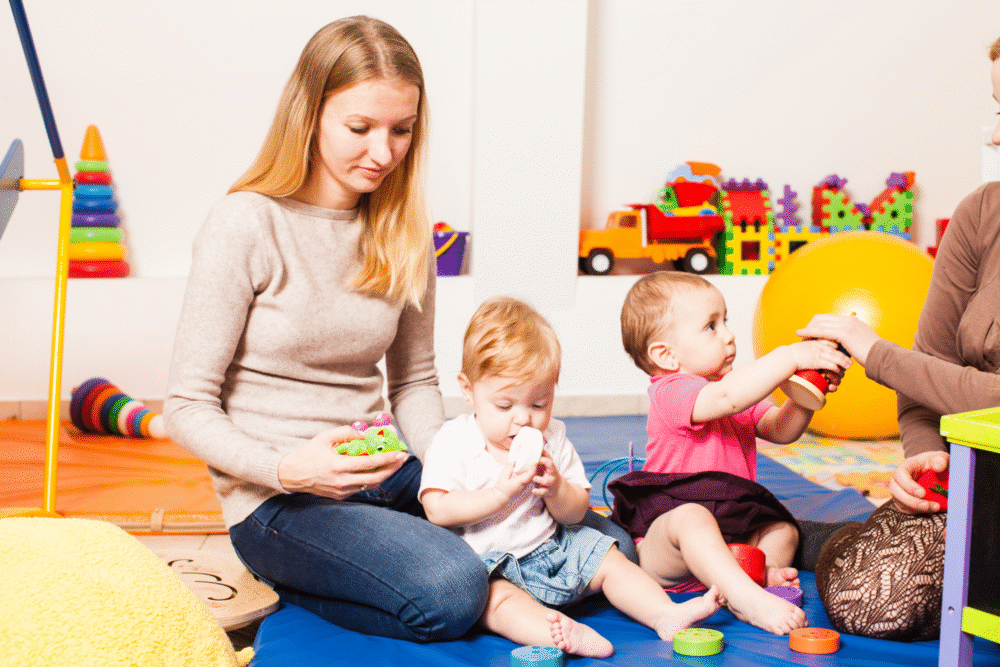The cul-de-sac may as well have been its own universe of quiet privilege.

Childhood in the upper-middle-class suburbs wasn’t flashy—it was subtly polished, carefully curated, and so normal it felt invisible. But looking back, the experiences weren’t universal. They were steeped in a very specific kind of comfort: structured routines, manicured lawns, and parents who could afford to shield you from chaos. Everything felt stable, even when it wasn’t.
These aren’t just nostalgic memories—they’re snapshots of a childhood made possible by zoning laws, good school districts, and quiet financial cushioning.
1. Attending themed birthday parties with matching goodie bags.

In suburbia, birthday parties were less about cake and more about coordination. One weekend it was a gymnastics center, the next was a science museum party with lab coats and take-home test tubes. Goodie bags were non-negotiable—packed with stickers, toys, and candy that perfectly matched the party’s color scheme. RSVP cards were mailed. Thank-you notes were expected. Parents took pictures like it was the Oscars. The whole thing was an event, and everyone played along. It wasn’t just about celebrating—it was about presentation. Even turning seven came with branded decor and Pinterest-level snacks.
2. Taking swim lessons at the neighborhood club.

Public pools weren’t the default here. Kids in upper-middle-class suburbs got their lessons at the local swim and tennis club. You had a punch card, a locker number, and a whistle-happy teen instructor named Brooke or Tyler. Lessons were followed by poolside snacks—often Goldfish and juice boxes in coolers your mom packed with military precision. And the real flex? Knowing someone on the swim team. It was all very casual and very elite. You didn’t realize how good you had it until you found out other kids learned to swim in lakes, rec centers, or not at all.
3. Playing on sports teams with embroidered duffel bags.

Suburban youth sports were less about athleticism and more about branding. Everyone wore matching uniforms with last names on the back and showed up with personalized duffel bags embroidered in school colors. Games were held at pristine fields with real bleachers, and snacks were rotated between parents like clockwork. Practices were intense but never extreme—just competitive enough to feel legit. You learned early how to warm up, cheer from the bench, and politely decline Capri Suns that weren’t your favorite flavor. Losing felt disappointing, sure—but someone always brought donuts, so no one stayed sad for long.
4. Visiting the orthodontist by third grade.

In upper-middle-class suburbia, orthodontic consultations started right around the same time you lost your first molar. The waiting rooms were stocked with iPads, magazines, and gentle reminders that your parents had good insurance. Getting braces was practically a rite of passage—everyone had them, everyone compared rubber band colors, and everyone counted the months until freedom. Some kids even had “phase one” braces before middle school. It wasn’t about vanity—it was about expected maintenance. Straight teeth weren’t a luxury. They were just part of the suburban starter pack.
5. Going on perfectly planned family vacations during spring break.

Spring break wasn’t spent hanging around the house. It was booked months in advance, complete with printed itineraries and TSA-friendly snacks. Some families went to Disney. Others skied in Utah or toured historic cities like Williamsburg. Flights were early, sunscreen was mandatory, and educational stops were always tucked in between amusement parks or beach days. You never questioned if a vacation was possible—it was a given. That expectation was invisible until you realized not every kid came back to school with a tan or a trinket from a gift shop three states away.
6. Walking to school in a group of kids your parents vaguely knew.

Suburban childhoods came with a built-in network of similarly aged kids, all within walking distance. Every morning felt like a slow parade—groups of kids meeting at predetermined corners while parents watched discreetly from porches or kitchen windows. You didn’t exchange numbers—you just showed up. Some kids were friends, others were just familiar faces you passed in the halls. The safety wasn’t just physical. It was cultural. Everyone assumed the neighborhood was “good,” so roaming felt fine. The world was big, but your four-block radius felt like a gated village, even if there was no actual gate.
7. Having a designated “playroom” filled with plastic bins.

Living rooms were for guests. Play happened in the designated playroom—usually a converted basement or bonus room outfitted with foam mats, cube shelves, and a chaos of labeled bins. There was a dress-up station, a craft table, and maybe even a mini trampoline. Toys had a place. Clean-up songs were sung. And if a toy made its way into the living room, it was swiftly returned like a stray sock. The space wasn’t just functional—it was a luxury. Not everyone grew up with square footage devoted solely to imaginative chaos that could be neatly tucked away before dinner.
8. Attending “camps” that felt more like enrichment programs.

Summer break didn’t mean downtime. It meant schedules—structured, theme-based camps that had nothing to do with tents or dirt. Robotics camp. Theater camp. Coding camp. You rotated through activities with name tags, T-shirts, and mid-morning snack breaks. Parents called it enrichment. You called it normal. These camps weren’t free, and they weren’t makeshift—they were businesses, and your parents happily paid for the experience. You didn’t realize until later how rare it was to spend July learning French cooking techniques or animating short films in a school’s air-conditioned computer lab.
